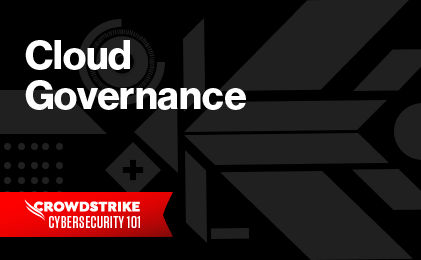Understand CNAPPs with Our Guide
Understand CNAPPs with Our Guide
Cloud firewalls defined
A cloud firewall acts as a barrier between cloud servers and incoming requests by enforcing strict authorization, filtering requests, and blocking any potentially malicious requests from unauthorized clients. It is a critical component of cloud security. Because modern businesses need to protect their servers from costly and destructive attacks and data breaches, cloud security has become a growing area of concern. Naturally, the role of the cloud firewall in this is important to unpack and understand.
In this article, we’ll explain how cloud firewalls work and why they have become a foundational component of cloud security. We’ll also consider their unique benefits and challenges in adoption.
Infographic: Improve Your Cloud Security Posture
Download this infographic to learn how you can improve your cloud security posture and compliance by addressing the most common cloud security challenges in multiple and hybrid clouds.
Download NowUnderstanding cloud firewalls
In your cloud environment, you have a network of computers constantly communicating with one another and with other computers over the internet. Cloud firewalls protect internal resources from attacks while seamlessly handling the increasing load and scale of cloud environments.
Cloud firewalls work with predefined rules that specify which clients are authorized to access which servers and which ports on those servers are accessible. As cloud firewalls enforce these rules, they block requests from clients based on suspicious request patterns, preventing malicious actors from accessing the server.
Firewalls have existed for decades, and they predate any public cloud provider. Traditionally, they were divided into two categories:
Physical firewalls: Hardware devices installed in physical locations, typically at the network perimeter.
Virtual firewalls: Software-based virtual appliances designed to more optimally serve virtual machines.
Unlike traditional infrastructure, cloud environments are elastic and can scale servers instantly based on request volume. Transitioning to elastic environments required a reconceptualization of firewall technology.
Cloud firewalls versus on-premises firewalls
Cloud firewalls differ from on-premises firewalls primarily in their deployment and scalability. On-premises firewalls, which may be physical or virtual devices, are managed within a company’s data center. They’re designed to protect the internal network and its assets. As an organization’s network grows, these on-premises firewalls will require manual configuration, ongoing maintenance, and hardware upgrades.
On the other hand, cloud firewalls are fully managed by cloud providers, relieving engineers of the arduous burden of maintenance. Cloud firewalls operate on a pay-as-you-go model, automatically scaling to meet the needs of the cloud infrastructure. They eliminate the need for manual intervention and hardware management.
Key functionalities of cloud firewalls
Traffic inspection and filtering
Cloud firewalls act as barriers to ensure that only authorized requests proceed to the origin server. This filtering can be based on several parameters, such as protocol or port number. Cloud firewalls can also perform deep packet inspection (DPI) at the application layer, which enables them to gain information from the payload of the request to detect malicious content.
Threat detection and prevention
By inspecting and collecting traffic data, cloud firewalls can identify suspicious activity. Abnormal request volumes from specific IP addresses, for example, might indicate an impending distributed denial-of-service (DDoS) attack, which cloud firewalls can automatically block. Traffic data analysis allows them to identify known malicious byte sequences (signatures). They can also mitigate more sophisticated attacks — such as SQL injections — before they materialize and detect anomalies, such as sudden spikes in traffic from unrecognized IP addresses.
Policy enforcement
Cloud firewalls create and enforce rule-based policies against a number of criteria. Role-based policies, which are increasingly popular among public cloud providers, enforce network rules based on the role assumed by the client instead of its IP address. This is generally considered more secure, as it abstracts access control from static, easily spoofed network attributes and instead ties permissions directly to client identity.
Logging and monitoring
Another key responsibility of the cloud firewall is to continuously monitor and oversee network traffic. It also cross-checks this traffic monitoring data against constantly updated threat intelligence, blocking suspicious requests to prevent emerging threats. As cloud firewalls track and log a history of requests, this becomes a valuable resource for identifying trends and unusual behavior patterns.
Benefits of using cloud firewalls
Scalability and flexibility
The elastic nature of the cloud means that a server can be provisioned and decommissioned several times throughout the day. Cloud firewalls guarantee that each new provisioned server will be protected with the same set of rules as its peers, without the need for any manual intervention.
Centralized management
Configurations for cloud firewalls are centralized. This reduces the administrator workload and eliminates many repetitive tasks. With infrastructure as code (IaC), engineers can quickly provision cloud firewalls with identical configurations across multiple environments.
In addition, the regulatory compliance of cloud firewalls is centrally managed by the cloud provider, which significantly reduces the legal burden of organizations.
Cost effectiveness
Because of the pay-as-you-go model for cloud resources, cloud firewall costs decrease if traffic levels are low. This can save organizations significant funds during non-peak periods. Additionally, the cloud provider fully manages cloud firewall upgrades and enhancements, saving organizations from dedicating resources to these maintenance efforts.
Improved security posture
Cloud firewalls act as shields that can stop DDoS attacks instantly while guaranteeing that malicious actors cannot access server ports that firewall rules have blocked. They mandate strict access control by enforcing rules that dictate which server ports can be accessed and who can access them. This introduces a strong first-line defense that prevents attackers from even attempting to find exploits in your infrastructure.
Cloud firewall deployment models
Cloud-native firewalls
Major cloud providers — such as AWS, Google Cloud and Azure — offer several firewall solutions on their platforms. Instance- and subnet-level firewalls operate at Layer 3 and Layer 4 of the OSI model, while web application firewalls (WAFs) operate at Layer 7 and are most commonly charged by usage.
Third-party firewall as a service (FWaaS) solutions
Many cybersecurity companies provide their own Layer 7 firewall technology as a service. They typically offer advanced features that often go beyond cloud provider offerings and are specifically designed to protect against a wide range of sophisticated attacks.
Hybrid deployments
Hybrid firewalls are a combination of on-premises and cloud firewalls, providing enhanced security for hybrid cloud solutions. If an organization is running its own on-premises data center, it can still provision a fully managed cloud firewall to increase security and reduce the burden on on-premises firewalls. Cloud firewalls for on-premises workloads can also act as a fail-safe if the on-premises firewall malfunctions.
Common challenges and solutions
Cloud firewall management is burdened by many complexities, which typically increase as your system grows and becomes more diverse.
Multi-cloud environments: Managing firewalls across multiple cloud providers can lead to configuration inconsistencies, requiring the utilization of techniques such as automated policy synchronization.
Consistent policy enforcement: Ensuring that security policies are consistently applied across all instances and environments requires meticulous oversight and frequent updates to prevent potential gaps.
High volumes of data and alerts: Enterprise systems handle billions of requests each day, making it essential for firewalls to not only process this vast volume effortlessly but swiftly identify and block any malicious activity.







